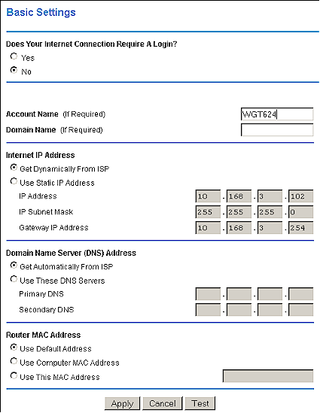Hardware Router Need To Know 2006
Everyone with a high-speed Internet connection needs a router. So why not learn how to choose the one that best meets your needs? We've updated and expanded our classic Hardware Router Need To Know to help you do just that!
WAN Port Features
With the firewall discussion out of the way, we can turn our attention to more practical matters... like how you get your router connected to the Internet!

Connection Type
Most routers now have a 10/100 Ethernet WAN port to accomodate the higher connection speeds provided by ADSL2, ADSL2+ and fiber-based connections. There are still routers with only a 10 Mbps WAN port, which should be fine for any Internet connection with 10 Mbps or lower download throughput. But if you have higher-speed Internet service, be sure that your router has a 10/100 Mbps WAN port.
For the most part, it's difficult to find serial WAN ports that can be used for dialup or ISDN connection, simply because those methods are so seldom used for a shared Internet connection. The most notable exception is the WiFlyer from Always On Wireless, which is a compact, portable router with a built-in telephone modem. It can also be used with a broadband modem via its Ethernet WAN port and supports both 802.11b wireless and Ethernet LAN connections.
Obtaining your IP address information
Once you have a router with the correct physical connection, you'll need to make sure that it can handle the various methods of obtaining IP address information and connection authentication that ISPs use. Let's first run down the two methods for setting up your router's IP address information that all routers provide, then review authentication methods.

Figure 1: WAN Connections
Sign up to get the BEST of Tom's Guide direct to your inbox.
Get instant access to breaking news, the hottest reviews, great deals and helpful tips.
Dynamic IP
In this method, which is sometimes referred to as "DHCP client", your router is set to obtain its IP, Gateway, and DNS server addresses automatically. It's a common method because is gives your ISP a lot of flexibility in configuring their network. Figure 1 shows a router configured for dynamic IP.
The downside is that since your IP address can change, any application that is looking for a server or application at a specific IP address will not find you when your IP address changes. Fortunately there are Dynamic DNS providers, such as TZO, who can make sure that folks can reach you no matter what your IP address is.
Static IP
This is the method of choice for folks who want to run servers and don't want to bother with using Dynamic DNS providers. It requires that you manually enter the IP, Gateway, and DNS address information that your ISP gives you. This choice is not always available, and if it is, you may have to pay extra for it. In Figure 1, all you'd need to do is click the Use Static IP Address radio button and enter the information.
Discard WAN ping / "Stealth" mode
One of the basic things that any port scanning program does is to ping your IP address and see if any answer comes back. This feature makes sure that your router doesn't make a peep if it's hit with a ping, so that the port scanner thinks that nobody's home at your IP address and doesn't mark you for further investigation. Definitely a good feature to have, and most routers now have it, and enable it by default!
Current page: WAN Port Features
Prev Page What is a Firewall, anyway? Next Page ISP Authentication - PPPoETom's Guide upgrades your life by helping you decide what products to buy, finding the best deals and showing you how to get the most out of them and solving problems as they arise. Tom's Guide is here to help you accomplish your goals, find great products without the hassle, get the best deals, discover things others don’t want you to know and save time when problems arise. Visit the About Tom's Guide page for more information and to find out how we test products.
